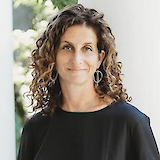August 16, 2023 Read Time:
Summer Institute
“Use your head” is the typical mantra of parents, educators and grown ups everywhere as they encourage young people to think for themselves and make smart decisions. But how can the rest of our bodies and the world around us help?
That was the key question educators puzzled through at The Extended Mind: Leveraging Creativity & Humor for Teaching & Leading, the Essex County Learning Community’s sixth annual Summer Institute.
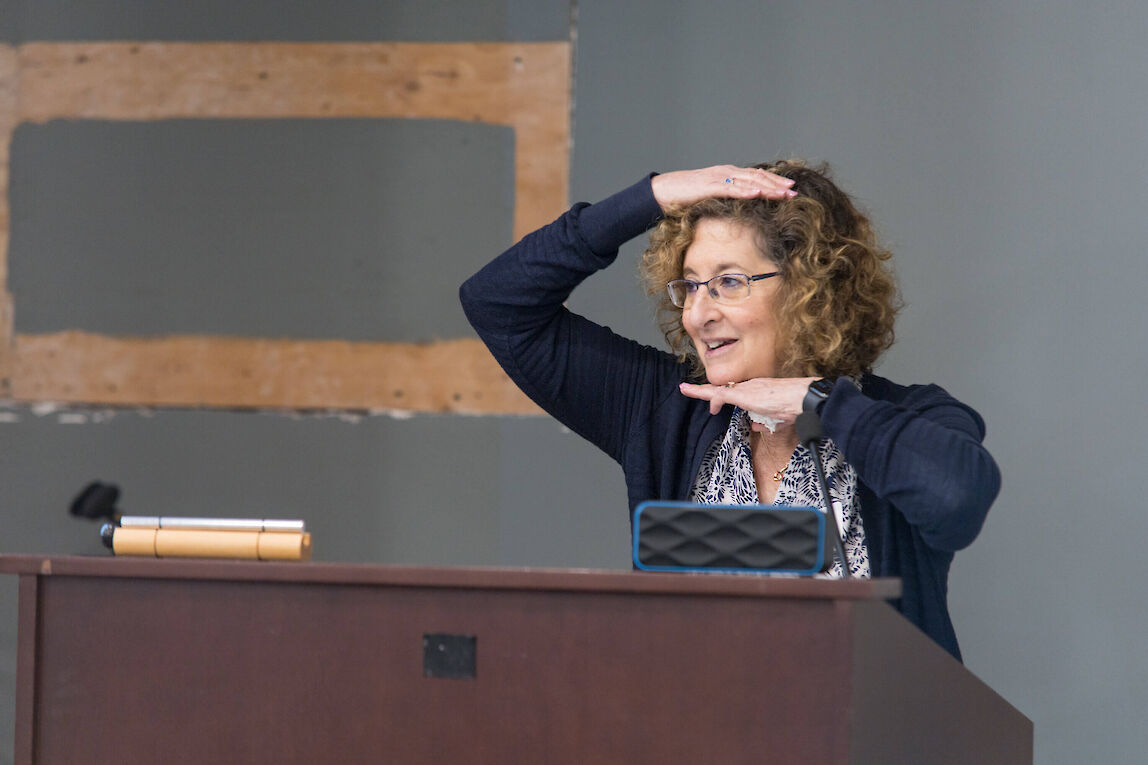
More than 60 people came to the August 3 session at Endicott College armed with notebooks and backpacks, the usual tools for a full day of traditional professional development. What they got instead was a summer day filled with laughter and learning, intermingled with walks on the beach, full body stretches, games, arts and crafts, and a new awareness and understanding of the importance of joy.
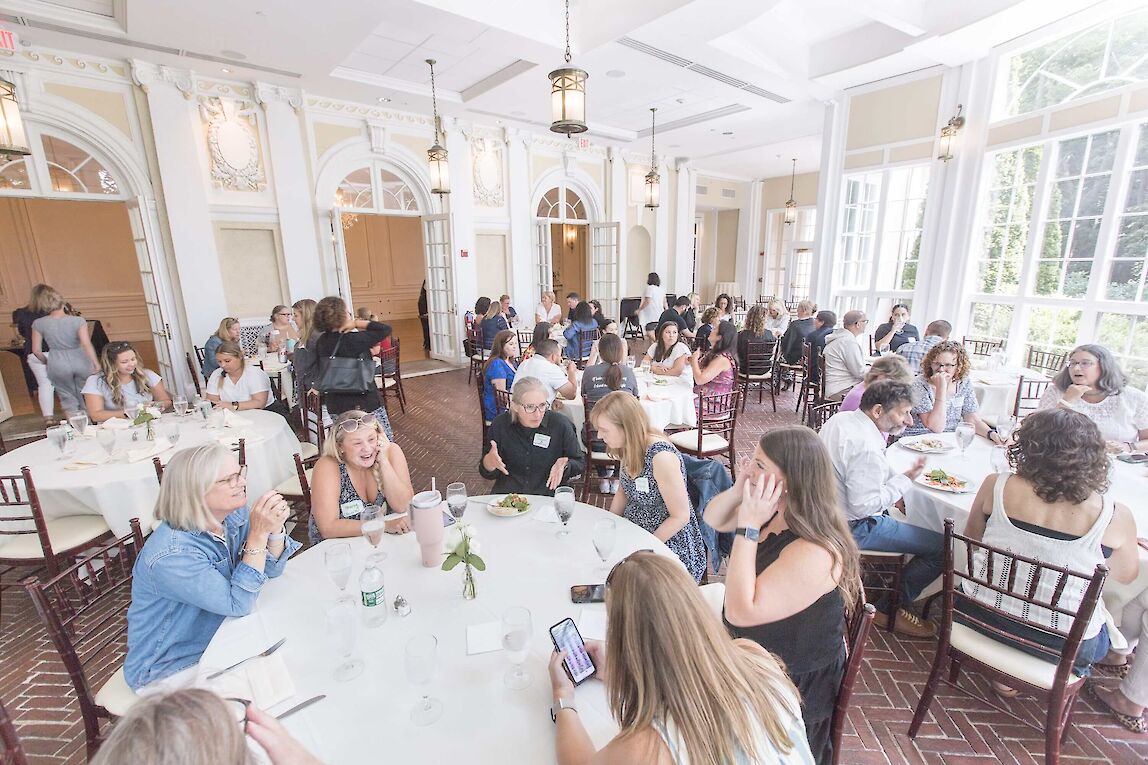
The idea for this day came from the stark realities of this moment in education. The new school year is approaching, the impacts of COVID are still being felt, and even after summer vacation, educators are worn out, anxious and overwhelmed. Prep days are packed with content and there’s more than enough to read, plan and absorb … but what about having fun? At Power of Place, our theory is that when educators are fully engaged in their own development - and get out of their own heads a little - the joyful energy and enthusiasm for learning can more easily be transmitted to their students, resulting in better learning outcomes.
Author Annie Murphy Paul reminded participants that not all of the thinking they need to do as educators happens inside their brains - it’s deeply informed by what’s happening on the outside. Likening the brain to an orchestra conductor, Paul reminded participants that the brain doesn’t just learn things in isolation, and that original thought and what makes each of us unique is built on everything around us.
In her book, The Extended Mind, Paul points to scientists, artists, authors, leaders and other innovators to illustrate how people can use the world “as raw material for their trains of thought.”
Strategies to leverage this outside-of-the-brain thinking are everywhere, she said. Some options: Go outside, and dig your toes in the sand. Adjust the lighting or design of a learning space to be more welcoming and comfortable. Swap a coffee break for a walk around the block or a few minutes of yoga. Listen to music. Dance.
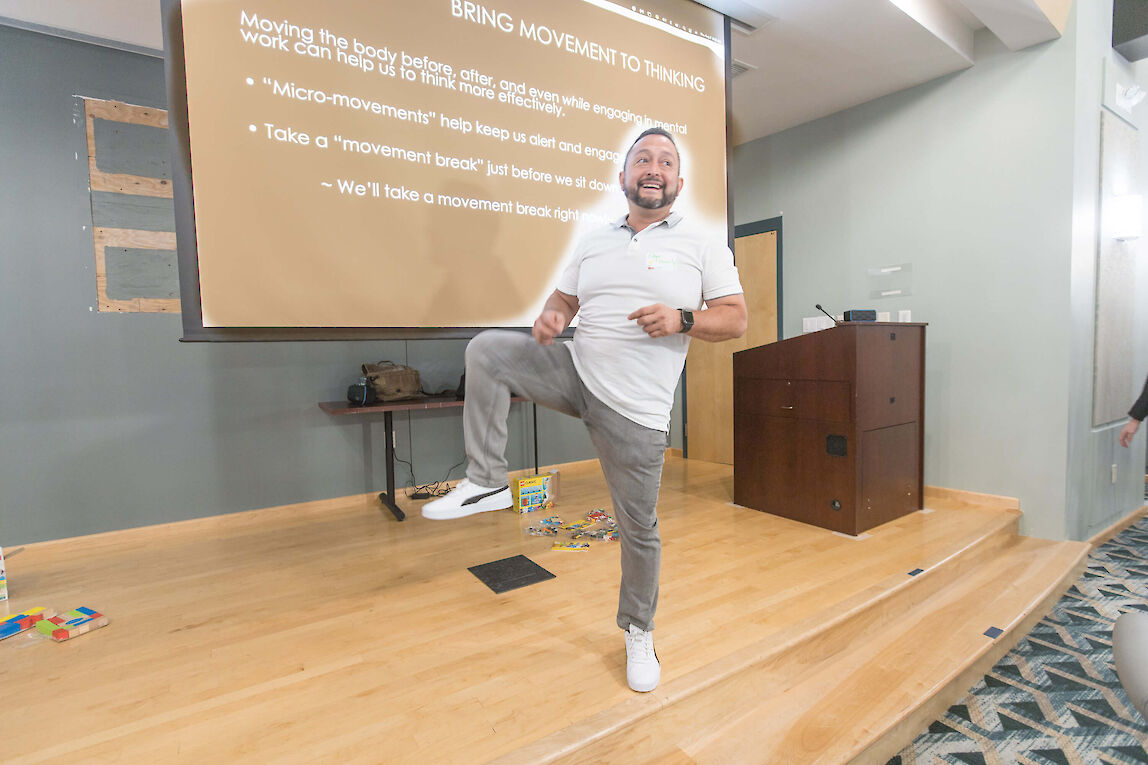
This push toward leveraging what Paul called “the extended mind” prompted participants to reflect on their own practice, and what they could augment. Schools like Essex North Shore Technical Agricultural School already tend to take a hands-on approach, but other schools still tend to default to the typical “sit and get” style of teaching. Attendees pointed to a range of alternatives to traditional instructional strategies that have shown some success but still haven’t taken hold, like playing charades, teaching sign language, or giving students at all levels a movement break to “get the wiggles out.”
David Penberg, leader-in-residence at 2Revolutions, reinforced Paul’s perspectives with his afternoon session, “What’s joy, laughter and play got to do with it?” Noting that Native Americans call laughter “joy juice,” he encouraged attendees to remember that before they can infuse joy into their students’ experiences, they need to “fill their own tanks.” Teaching, he noted, can be emotional labor that takes and takes, but doesn’t always give much back.
One suggestion: Play more. Mid-session participants were released to do just that at stations around the room set up with children’s games, markers, coloring books, Play-Doh, Legos, building blocks, bubbles, Uno and Mad Libs. One group huddled around the Uno table, delving immediately into a competitive match; others made a bee-line for the adult coloring books, where they sat and calmly colored, talking in hushed tones. Still others roamed, spending a few minutes at each station and moving on when they were ready.
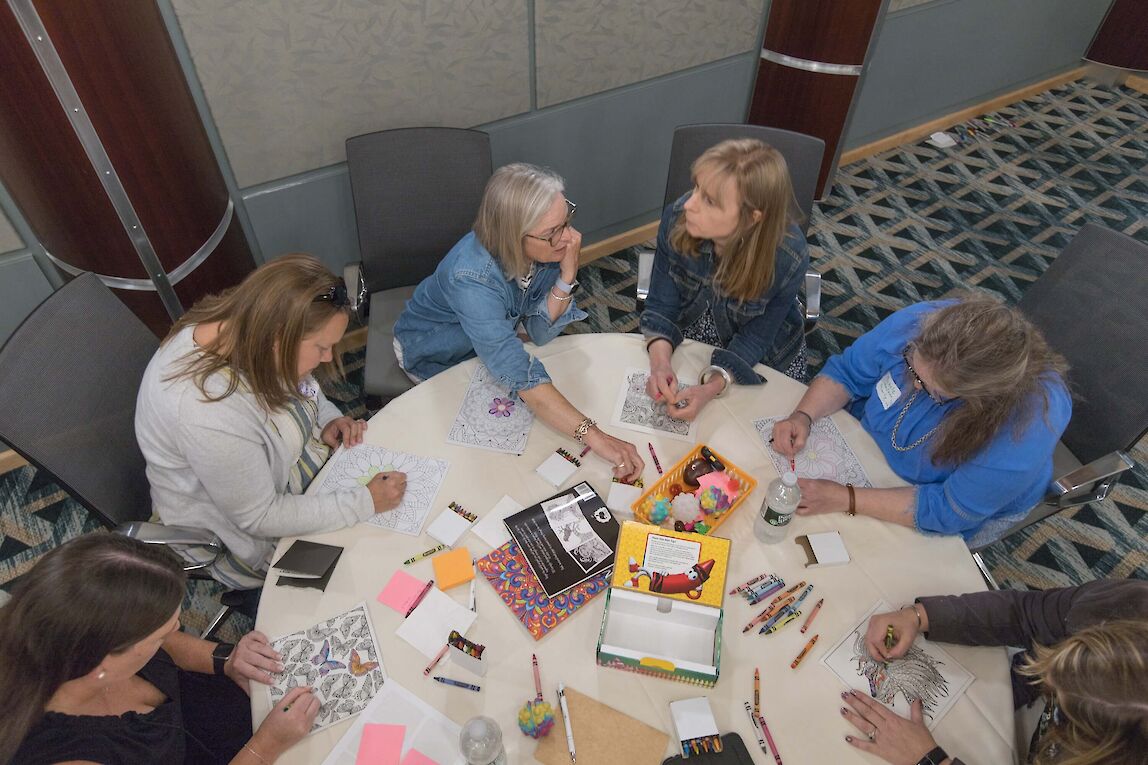
By the end of the day participants left brimming with ideas to braid some new - and not so new - elements of joy into their lives, their schools, and their classrooms. This school year will be another challenging one for both educators and their students, and more seat time won’t make things any easier, they agreed.
Five minute dance breaks between classes on the other hand…
